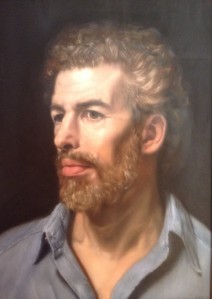Born to do Math 59 – Many Worlds
Scott Douglas Jacobsen & Rick Rosner
May 5, 2017
[Beginning of recorded material]
Rick Rosner: Perspectives like the Many Worlds perspective. I have a feeling that when we understand things better. There will be optional perspectives, optional ways to frame existence that may or may not be provable. I feel like Many Worlds is possibly an unprovable proposition, but is convenient for talking about certain aspects of the world. There are some aspects of Many Worlds theory that are definitely woven into the universe.
Quantum indeterminacy, Schrodinger’s Cat kind of deal but with subatomic particles, those are definitely real kind of alternate versions of the world that can be presented via some very precise quantum math. If you want to talk about Many Worlds that way, that’s not just acceptable. That’s pretty much undeniable, but if you want to talk about Many Worlds across some abstract space like the set of all worlds where Kennedy didn’t get assassinated and so on.
Those things may have some mathematical legitimacy because you could describe some quantum wave signature. If you had world enough and time, you could describe a universe like ours, except Kennedy didn’t get assassinated. But does that mean that that world has some kind of existence? You could probably argue it either way and it probably doesn’t matter except as something that is fun to think about and is a convenient framing device.
[End of recorded material]
Authors[1]

Rick Rosner
American Television Writer
RickRosner@Hotmail.Com
Rick Rosner

Scott Douglas Jacobsen
Editor-in-Chief, In-Sight Publishing
Scott.D.Jacobsen@Gmail.Com
In-Sight Publishing
Endnotes
[1] Four format points for the session article:- Bold text following “Scott Douglas Jacobsen:” or “Jacobsen:” is Scott Douglas Jacobsen & non-bold text following “Rick Rosner:” or “Rosner:” is Rick Rosner.
- Session article conducted, transcribed, edited, formatted, and published by Scott.
- Footnotes & in-text citations in the interview & references after the interview.
- This session article has been edited for clarity and readability.
- American Psychological Association. (2010). Citation Guide: APA. Retrieved from http://www.lib.sfu.ca/system/files/28281/APA6CitationGuideSFUv3.pdf.
- Humble, A. (n.d.). Guide to Transcribing. Retrieved from http://www.msvu.ca/site/media/msvu/Transcription%20Guide.pdf.
License
In-Sight Publishing and In-Sight: Independent Interview-Based Journal by Scott Douglas Jacobsen is licensed under a Creative Commons Attribution-NonCommercial-NoDerivatives 4.0 International License.
Based on a work at www.in-sightjournal.com and www.rickrosner.org.
Copyright
© Scott Douglas Jacobsen, Rick Rosner, and In-Sight Publishing and In-Sight: Independent Interview-Based Journal 2012-2017. Unauthorized use and/or duplication of this material without express and written permission from this site’s author and/or owner is strictly prohibited. Excerpts and links may be used, provided that full and clear credit is given to Scott Douglas Jacobsen, Rick Rosner, and In-Sight Publishing and In-Sight: Independent Interview-Based Journal with appropriate and specific direction to the original content.
No comments:
Post a Comment